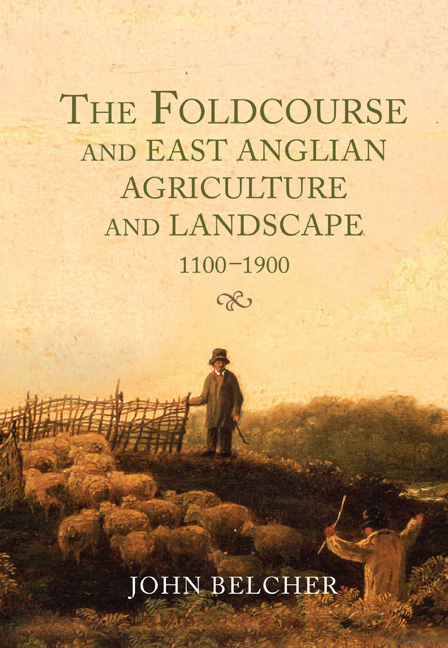Book contents
- Frontmatter
- Contents
- List of Illustrations
- Acknowledgements
- List of Abbreviations
- Introduction
- Chapter 1 The Contexts of the Foldcourse
- Chapter 2 Manors, Rights and Customs of the Foldcourse
- Chapter 3 The Medieval Foldcourse
- Chapter 4 The Late Medieval Evolution of Foldcourse Husbandry
- Chapter 5 The Agricultural Practice of Foldcourse Husbandry
- Chapter 6 The Foldcourse and Improvement
- Conclusions
- Glossary
- Bibliography
- Index
- Garden and Landscape History
- Frontmatter
- Contents
- List of Illustrations
- Acknowledgements
- List of Abbreviations
- Introduction
- Chapter 1 The Contexts of the Foldcourse
- Chapter 2 Manors, Rights and Customs of the Foldcourse
- Chapter 3 The Medieval Foldcourse
- Chapter 4 The Late Medieval Evolution of Foldcourse Husbandry
- Chapter 5 The Agricultural Practice of Foldcourse Husbandry
- Chapter 6 The Foldcourse and Improvement
- Conclusions
- Glossary
- Bibliography
- Index
- Garden and Landscape History
Summary
Oliver Rackham described the landscape of Britain as the product of both “the natural world and human activity interacting with each other over many centuries”, an interaction that was predominantly mediated through the character of the farming practices that were undertaken at any particular time. Thus, the nature and appearance of the rural landscape during the medieval and early modern periods was fundamentally a product of the various agricultural regimes under which it was managed. There were during these periods – given the various physical factors such as soils, relief and climate – a multiplicity of regimes and ways of farming, each of which had its own balance between the various agricultural elements: field systems, crops and cropping regimes, meadows, pastures and wastes. While the physical environment within which farmers operated was a significant influence over what might or might not be achieved, it could “never remove all freedom of choice”. It was human agency – the labour, skills, knowledge, observations and judgement of those who carried out the seasonal round of farming operations – as well as the social and economic structures within which farmers operated that, in the final analysis, shaped the character of the physical environment. Some of these agrarian regimes continued, with little change, for many centuries; others were transformed by developments in patterns of ownership or market conditions, although usually in ways critically influenced by the earlier trajectories of the communities and landscapes in question. But the characters of successive farming regimes, even their more detailed and technical aspects, are not merely matters of historical interest. Much of the modern countryside, and in particular the ‘semi-natural environments’ that are today vital for sustaining biodiversity, was shaped by them. Only by studying the minutiae of past management systems can these environments be sustained into the future.
In broad terms, the countryside of lowland England can be divided into two regions, characterised by Rackham as ‘ancient’ and ‘planned’ and by early topographers as ‘woodland’ and ‘champion’. Essentially, the former were areas of enclosed fields, the latter of open-field farming – that is, the cultivation of arable land in narrow, intermixed strips, subject to some degree of communal management and usually grazed in common after the harvest and in the fallow season.
- Type
- Chapter
- Information
- Publisher: Boydell & BrewerPrint publication year: 2020



